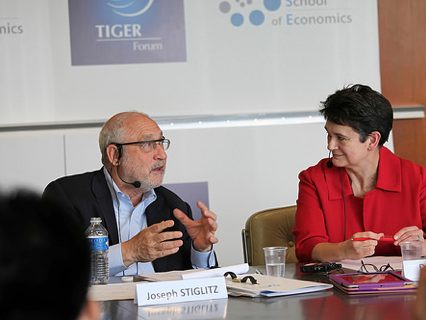There’s a new e-book free to download from Vox EU,Secular Stagnation: Facts, Causes and Cures.
The list of contributors is stellar, starting with the leading Stagnationists, Robert Gordon and Larry Summers, but also including economists such as Ed Glaeser and Joel Mokyr who disagree with the basic secular stagnation assertion that the pace of innovation and therefore technology-driven growth has declined.
For example, Glaeser writes: “It is hard to think of any innovations before the modern age that increased demand for the most skilled workers while providing consumer benefits for
the masses. Indeed, for such a thing to occur, one must imagine a world in which highly paid elite workers toil for the benefit of services that will be used by the poor. Could
such a thing be imaginable in pre-revolutionary France or in Ming China? Yet that is
exactly what happens at Google or Facebook. Highly paid workers work constantly to
improve a service that is provided freely to hundreds of millions of poorer users.”
He continues: “This inversion of the traditional nature of innovations represents the rise of superstarlike technologies (Rosen 1981) that enable the highly competent to provide their
services as almost a public good, with no congestion in use. The most natural precursor
to this modern inversion was well-paid artists, such as writers and movie stars, who
entertained the masses. The inversion also happened when Fred Astaire and Ginger
Rogers danced for depression-era movie audiences. The essentially zero marginal cost of providing internet-related services means that they are often monetised through the advertising of goods with a positive marginal cost. It is free to use Google, but their search engine will nudge users towards their advertisers. The free nature of these services has meant a democratisation of access to information; a fact that is rarely considered in attempts to measure inequality.”
However, the essay goes on to say this does not mean that all is well. It focuses on the adverse employment consequences of the interaction of negative demand shocks and labour market/educational institutions. There’s innovation, and then there’s who benefits from it. In that famous question, ‘What did the Romans ever do for us?’, the emphasis should be on ‘us’ not on ‘Romans’.
The book is a great summary of the state of the debate. I’m in the Glaeser/Mokyr camp at present, but none of us should be anything other than open-minded about these questions.

